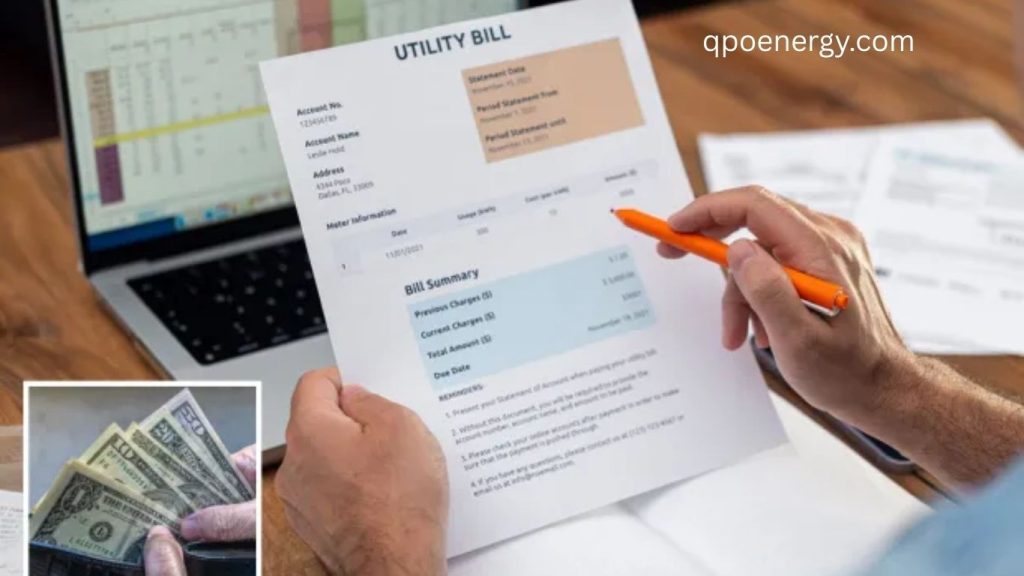As energy Bill credits costs continue to rise, millions of Americans are looking for ways to reduce the burden of heating, cooling, and utility bills. Fortunately, several programs across the United States are providing financial relief this October, with opportunities to save anywhere from a few hundred dollars to as much as $3,200. From North Dakota to California, states are offering assistance through federal, state, and local programs designed to keep households comfortable while cutting energy expenses.
North Dakota: Heating Assistance Through LIHEAP
Residents of North Dakota can expect welcome support beginning October 1 through the Low-Income Home Energy Assistance Program (LIHEAP).
This program is designed to help low-income households cover heating costs during the cold months of the year. Running from October 1 through May 31, LIHEAP offers a one-time annual payment of up to $1,100 to qualifying households.
Who Qualifies?
Eligibility is based on income. To receive assistance, households must earn at or below 60% of North Dakota’s median income:
- person household: $40,530 or less
- person household: $53,010 or less
- person household: $65,478 or less
Each state sets its own limits, but the core mission of LIHEAP is the same nationwide: helping families stay safe and warm during winter without being overwhelmed by high bills.
Illinois: Bill Credits Through Community Workshops
Residents of Carbondale, Illinois, also have a chance to receive energy bill relief in October—but with a unique twist. The city is partnering with Ameren Illinois to offer $300 bill credits to participants who attend a workshop.
How It Works
The workshop, scheduled for October 2 at the Carbondale Civic Center, will run from 9:00 a.m. to 4:00 p.m.. Attendees will learn about available resources and programs while earning direct credits toward their utility accounts.
Eligibility
Households with incomes at or below 300% of the Federal Poverty Level (FPL) qualify for the $300 credit. For many families, this workshop represents both an educational opportunity and immediate financial support.
California: Automatic Energy Bill Credits

In California, residents don’t need to apply or attend events to receive relief. A statewide initiative will automatically deliver credits to Pacific Gas and Electric Company (PG&E) customers this October as part of the state’s broader push to reduce emissions and cut energy costs.
What Customers Can Expect
- Residential households: $58.23 credit
- Gas account holders: Additional $67.03 credit
- Dual–service households (electric + gas): Receive both credits
- Small businesses: $58.23 credit
These automatic reductions appear directly on October utility bills, ensuring seamless relief for both households and businesses.
Nationwide: Energy Efficient Home Improvement Credit
While state programs provide immediate assistance, there’s also a federal credit available nationwide that rewards households for making energy-efficient improvements.
The Energy Efficient Home Improvement Credit runs through December 31, 2025, giving homeowners several years to take advantage.
How the Credit Works
The credit covers 30% of qualifying expenses, with annual limits depending on the type of improvement:
- Exterior doors: $250 each, up to $500
- Windows and skylights: Up to $600
- Home energy audits: $150
- Other improvements: Up to $1,200 annually for energy-efficient property costs
In total, Americans can claim up to $3,200 annually if they invest in eligible upgrades such as insulation, efficient windows, or improved heating and cooling systems. This not only lowers taxes but also reduces long-term energy bills.
Practical Ways to Save on Energy Bills
While credits and payments provide financial relief, adopting smart energy-saving habits can further stretch household budgets. Here are a few practical strategies:
- Air–dry laundry: Skip the dryer and use drying racks to reduce electricity use.
- Reflect heat: Install reflective window film or foil to keep homes cooler in summer.
- Use humidifiers: A cool-mist humidifier with cold water helps maintain comfortable indoor climates.
- Maximize heating efficiency: Place heat-reflective pads behind radiators to trap warmth and reduce wasted energy.
These small steps add up, ensuring lower bills alongside program benefits.
Why These Programs Matter
Rising utility costs are a pressing issue for millions of Americans. Programs like LIHEAP, state-specific credits, and federal tax incentives provide much-needed stability, particularly for low- and middle-income households.
- Immediate relief: Direct bill credits and payments ease the burden during high-cost months.
- Long–term savings: Federal credits encourage energy-efficient improvements that reduce bills for years to come.
- Community support: Local workshops, such as in Illinois, connect residents with valuable resources while delivering direct aid.
For many households, these initiatives can mean the difference between financial strain and security this winter.
Frequently Asked Questions:
Who qualifies for the $3,200 energy bill credits in October?
Eligibility depends on the program. For example, LIHEAP sets income limits by state, while federal energy-efficient home credits apply to households that made qualifying improvements. Always check your state’s requirements.
Do I need to apply for these energy bill credits?
Some credits are automatic, such as California’s PG&E bill credits, which appear directly on customer accounts. Others, like LIHEAP or tax-based incentives, require an application or proof of upgrades.
When will I receive the October energy bill credits?
Timing varies. North Dakota LIHEAP payments begin October 1, Illinois residents can get credits on October 2 through workshops, and PG&E credits in California will show on October bills.
How much can a household receive from LIHEAP in North Dakota?
Qualifying households can get up to $1,100 toward heating costs for the season, depending on income and household size.
Are small businesses eligible for energy bill credits?
Yes. In California, for example, small businesses also qualify for the $58.23 automatic bill credit under PG&E’s program.
Can I claim both state energy credits and the federal tax credit?
Yes, households can benefit from both. For example, you might receive state assistance through LIHEAP while also claiming the federal Energy Efficient Home Improvement Credit.
How do I maximize the $3,200 federal energy credit?
You can claim 30% of eligible expenses on qualifying improvements like insulation, windows, doors, energy-efficient systems, and home audits, up to $3,200 annually.
Conclusion
Americans facing rising energy costs can look forward to meaningful relief this October. With programs like LIHEAP in North Dakota, community workshops in Illinois, automatic bill credits in California, and the federal Energy Efficient Home Improvement Credit, households have multiple opportunities to ease financial stress while lowering utility expenses. Together, these initiatives not only provide short-term support but also encourage long-term savings through energy efficiency. By staying informed, applying where necessary, and adopting smart energy habits, families and small businesses can maximize benefits and keep more money in their pockets this season.


